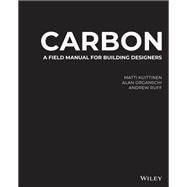A comprehensive approach to design that integrates sustainable principles and design strategies for decarbonized construction
Representing an international collaboration between academics and architects in the United States and Europe, Carbon: A Field Manual for Designers and Builders offers professionals in the field an approach to sustainable design that embraces building science principles, life-cycle analysis, and design strategies in carbon neutral construction. The book also contains background information on carbon in construction materials and in the building design process.
This book is filled with illustrative diagrams and drawings that help evaluate the potential impact of design decisions for creating carbon emissions. Written by and for designers and builders, the book includes a compelling pair of case studies that explore carbon-reducing strategies, suggests steps for assessing a building's carbon footprint, and reviews carbon storages and circulation of materials. The guidelines detailed in the book can be adopted, replicated, and deployed to reduce carbon emissions and create more sustainable buildings. This important book:
- Offers an effective approach to sustainable design in construction
- Integrates building science principles, life-cycle analysis, and design strategies in carbon neutral construction
- Describes a methodology for quantifying the flow of carbon in the built environment
- Provides an analysis of carbon-reducing strategies based on a case study of a building designed by the authors
Written for practicing professionals in architecture and construction, Carbon: A Field Guide for Designers and Builders is a must-have resource for professionals who are dedicated to creating sustainable projects.









